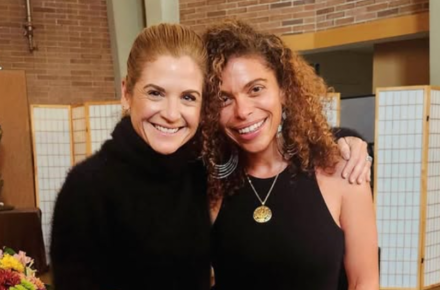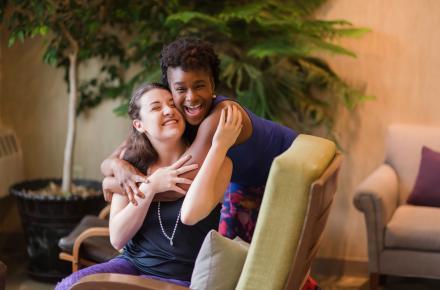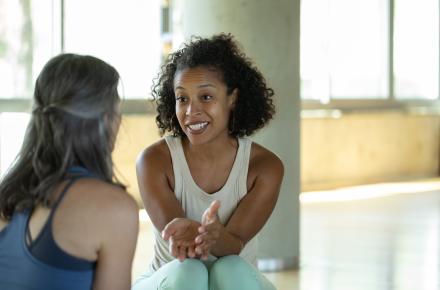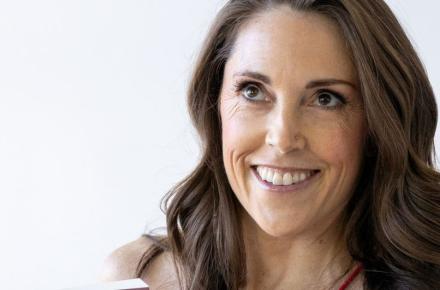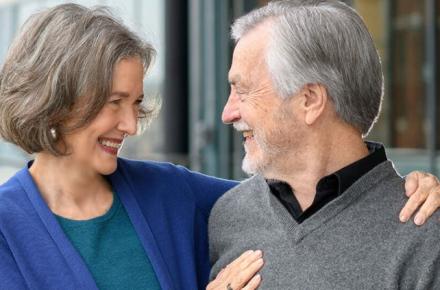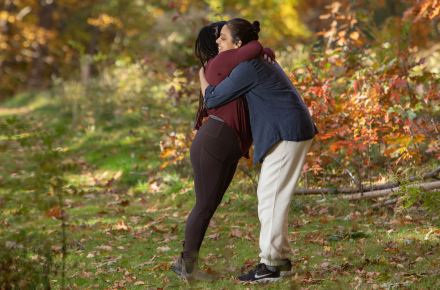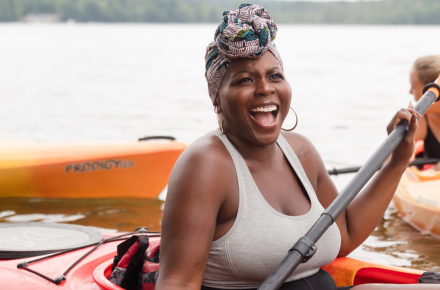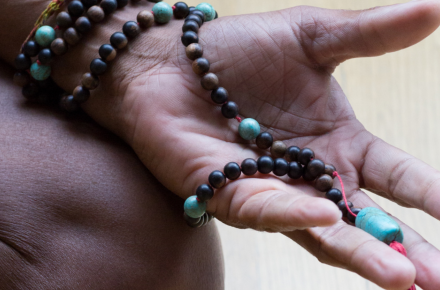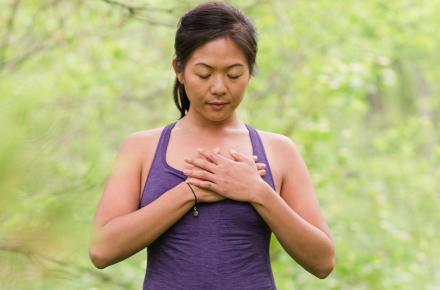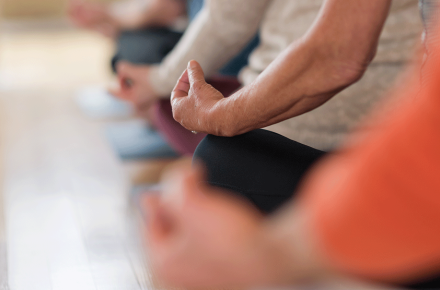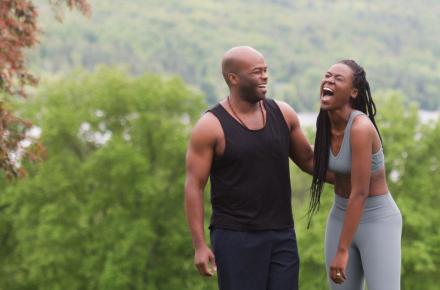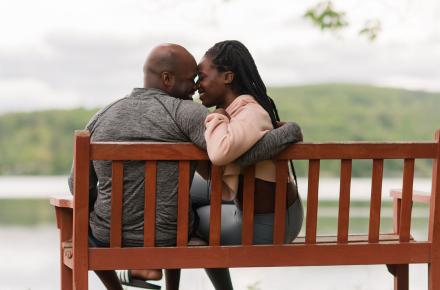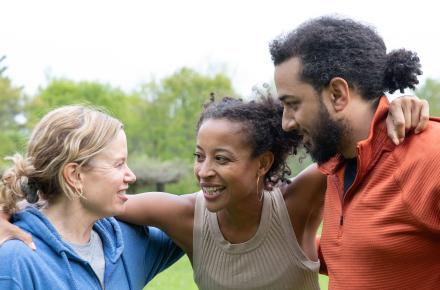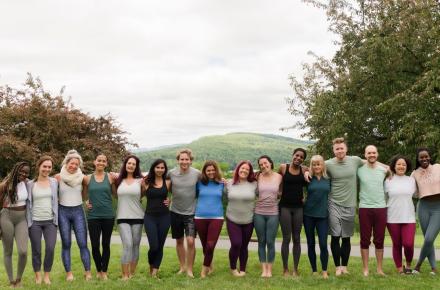Marriage is Like Yoga

by Linda and Charlie Bloom
As longtime yoga practitioners, we’ve discovered that the principles of yoga can be applied to marriage. Just as the regular practice of yoga leads to a strong, attractive healthy body, the regular practice of relationship yoga leads to a strong, beautiful marriage.
We develop strength and flexibility by stretching into our partner’s world. Because we tend to be attracted to people who are in many ways different from ourselves, relationships provide ever-present opportunities to practice stretching—opening ourselves up to and accepting feelings, behaviors, tastes, preferences, and values that may be very different from those which we are familiar and comfortable.
Intimate connection requires stretching to the point of distress. The challenge is not to avoid the discomfort, but to stay with it to better understand ourselves as well as our partner. As in yoga, we must hold the stretch to become more adept in staying with the discomfort, but we need to know ourselves well enough to recognize when to ease up so as not to risk injury. Over-stretching can be harmful, but if we ease up too soon, we’ll never grow stronger. By finding this exquisite balance point, we get the most out of our yoga and our marriage.
As our yoga practice grows, we develop the capacity to tolerate increasing levels of discomfort while remaining still in difficult postures. This stretching allows us to develop tone. It’s the same in marriage. We gradually become more acclimated to positions that we had previously found to be highly uncomfortable. This is not a matter of accepting an intolerable situation, such as abuse or disrespect, but rather of increasing our levels of personal strength, openness, flexibility, and acceptance. We stay present with our own feelings of sadness, anger, or fear. When we welcome and gently embrace these feelings, we can stay connected to our partner with an open, caring heart. We can even move into positions we never imagined we could tolerate, and are pleasantly surprised to discover that we find balance there.
Hatha means “force”; yoga means “union.” The force results from the joining of “ha,” which means sun, and “tha,” which means moon. In many spiritual traditions, the sun is associated with the masculine, the moon with the feminine. The practice of joining the masculine and feminine in a balanced way results in a powerful force. When we practice the postures in yoga, the inner masculine and feminine come into balance, resulting in a supple, graceful body. When we use our marriage as a practice, the inner masculine and feminine come into balance as well. Instead of resisting the masculine active, initiatory, competitive, penetrating, assertive principles, we learn to honor these energies; instead of denigrating the feminine receptive, passive, sensitive, yielding, patient principles, we come to respect and appreciate them. If the sun and the moon within each individual can coexist in harmony, then the energies of two individuals can blend to manifest as a graceful, supple partnership.
In yoga, regular practice leads to greater proficiency, and long-term daily practice allows us to excel at the art. So it is with relationship yoga; the consistent practice of handling differences with generosity and goodwill serves to strengthen both the individuals as well as the relationship itself.
One of the goals of the yoga practice is to become physically healthy by stimulating all the body’s systems—respiratory, circulatory, muscular, skeletal, digestive, illiminatory, and reproductive. We practice to enhance our energy, to remain youthful and vital into old age, and to live a long productive life. These same benefits are available to those who adopt relationship yoga as their practice. As recent scientific evidence shows, those in good marriages suffer fewer diseases and live longer. Through contemplation, devotion, and action, yoga practitioners experience both ecstatic states as well as peace of mind; by being considerate and active in their devotion, marital partners, too, can experience ecstatic states as well as a profound quality of inner peace.
Linda and Charlie Bloom have been working with individuals, couples, and groups since 1975 and are coauthors of 101 Things I Wish I Knew When I Got Married: Simple Lessons to Make Love Last, which has sold more than 100,000 copies, and Secrets of Great Marriages: Real Truth from Real Couples about Lasting Love.
© Kripalu Center for Yoga & Health. All rights reserved. To request permission to reprint, please e-mail editor@kripalu.org.





